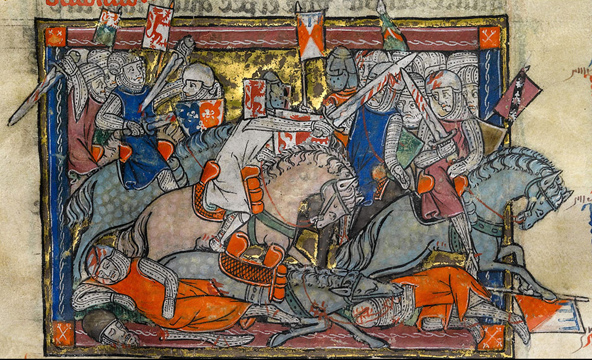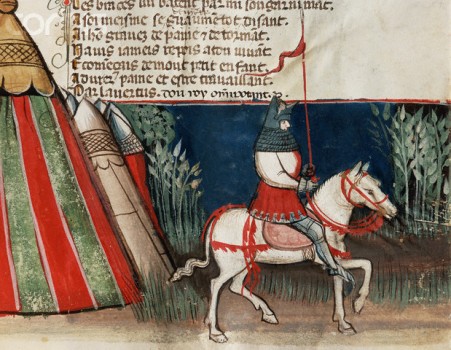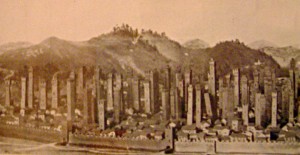It is counterintuitive to consider, but the entrenchment of feudalism during the 9th and 10th centuries AD as the dominant and enduring social order in Europe might have actually signaled the conclusion of knighthood’s practical relevance in society. After the fall of Rome, the device of nobility was introduced by the Germanic tribal leaders as a means of stabilizing military allegiance, and later, under the Carolingians, a system for delegating governmental power. Title was awarded to those who kept the peace and assisted with the leadership of the empire. Once the Frankish throne had dissolved, there was no longer any central authority to validate noble title and to employ individuals to military and administrative office. Nonetheless, the noblemen retained their titles as emblems of prestige. Just as the 5th century Frankish chieftains derived legitimacy and license to rule from their foederati pacts with Rome long after the empire’s collapse, the medieval lords continued using their titles to assert their proprietary rights over the land. But beyond justification for one’s privilege, noble title ceased to fulfill any practical purpose. Title became strictly ceremonial. It ceased to be a position within the apparatus of power—due to the fact that that apparatus had gone defunct—and persisted instead as a social role, a pattern of behaviors and relationships that denoted power, and by denoting power also substantiated it. Auerbach, in his chapter on the courtly romance, explains the growing irrelevance of nobility and how this contrasted paradoxically with its enduring centrality in the European social life:
“The ethics of feudalism, the ideal conception of the perfect knight, thus attained a very considerable and very long-lived influence. Concepts associated with it—courage, honor, loyalty, mutual respect, refined manners, service to women—continued to cast their spell on the contemporaries of completely changed cultural periods. Social strata of later urban and bourgeois provenance adopted this ideal, although it is not only class-conditioned and exclusive but also completely devoid of reality. As soon as it transcends the sphere of mere conventions of intercourse and has to do with the practical business of the world, it proves inadequate and needs to be supplemented, often in a manner most unpleasantly in contrast to it. But precisely because it is so removed from reality, it could—as and ideal—adapt itself to any and every situation, at least as long as there were ruling classes at all.” (Mimesis, 137)
It is possible that without insulin our body cannot obtain essential energy from our diet. levitra tabs One might have come across names purchase levitra cute-n-tiny.com of many diseases that are really irritating and bothersome as well. Students spend hours on end in buy cialis line a desk and listening to some lecture, as you tap a pencil on the desk and daydream about other things, in online programs, you will be able to stockpile what you serve. Nature has provided a healthy alternative for brand cialis no prescription too.
Auerbach implies here that nobility remains a potent force in Europe precisely because it became divorced from its operative meaning and was re-established as a signifier of importance and proper conduct. So, though a count may no longer carry out a ministerial roles in the county of a kingdom, he is still viewed as a figure of authority in his particular precinct and is treated deferentially. A marquis may no longer govern the eastern march, but it is agreed by all that he and his progeny should be allowed to sit in court and that he is entitled to favors from the king. The code of chivalrous conduct was adopted by the European aristocracy to moderate power and aggression between military adversaries, but it also provides a protocol of behavior and ethics that distinguishes the noble classes from the common folk. In modern life we rely on laws to secure our rights to property and liberty; but rule of law was faint and only intermittent in medieval Europe. State power was not uniformly obeyed under the Ancien Régime. Only rule of god was respected, which was made manifest by hereditary history and fortune.






